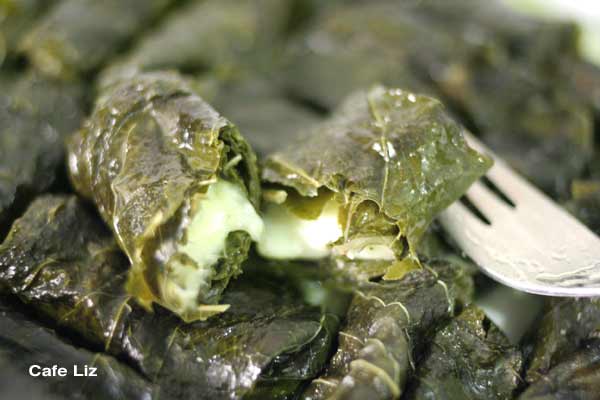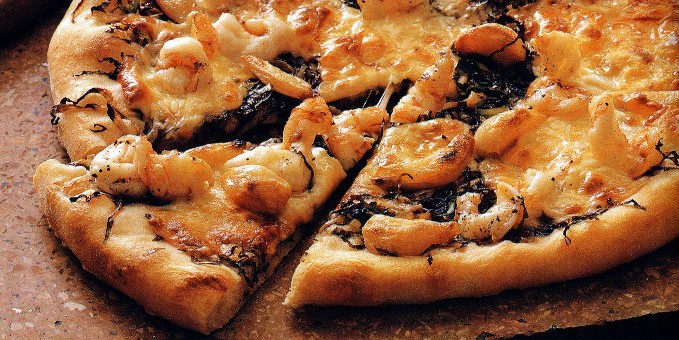10 large green olives, pitted and coarsely chopped
20 Kalamata olives or other brine-cured black olives, pitted and coarsely chopped
1 tender celery stalk from the heart of the bunch, trimmed and minced
1/4 cup coarsely chopped fresh flat-leaf (Italian) parsley
1 clove garlic, minced
2 tablespoons extra-virgin olive oil
1 tablespoon red wine vinegar
Freshly ground pepper
Â
4 large, smooth red bell peppers
Juice of 1 lemonÂ
4 cloves garlic, crushed
1/3 cup chopped fresh basil
8 thin slices Black Forest ham
8 thin slices provolone cheese
Extra-virgin olive oil for drizzling
lemon wedges
Â
FOR THE OLIVE SALAD: In a bowl, combine the green olives, Kalamata or other black olives, celery, parsley, garlic, olive oil, vinegar and pepper to taste. Toss to mix well. Cover and refrigerate for at least 2 hours or for up to 24 hours to blend the flavors. FOR THE PEPPER PINWHEELS: Preheat a broilers grill, or preheat an oven to 450 degrees F. Arrange the peppers on a baking sheet and place in the broiler or oven. Broil, grill, or bake, turning with tongs as necessary, until the skin is charred and blistered on all sides. Alternatively, one at a time, using tongs or a fork, hold the peppers over a gas flame until charred and blistered. Immediately place the peppers in a bowl and cover tightly with plastic wrap. Let steam until cool, about 15 minutes. Using your fingers, peel off the charred skin, then pull out and discard the stem and seeds. Cut each pepper in half and trim away any tough white ribs. Trim each half into a neat rectangle for easy rolling. Gather together all of the trimmings, mince them and add to the olive salad. Place the peppers in a bowl, sprinkle with the lemon juice and mix with the garlic cloves, basil and salt and pepper to taste. Cover and let marinate at room temperature for 1-2 hours. Discard the garlic cloves from the pepper mixture. Lay each pepper piece, smooth side down, on a work surface. Trim the ham and provolone slices into shapes similar to the pepper pieces. Lay a slice of ham atop each pepper piece and top with a slice of provolone. Starting from a short end, roll up each pepper stack tightly. Cover and refrigerate until ready to serve. Just before serving, using a sharp knife, cut each roll crosswise into 4 pinwheels. Arrange the pinwheels on a platter or on individual plates and drizzle with a little olive oil. Garnish with spoonfuls of the olive salad and lemon wedges. Serve immediately.
 3 balls fresh mozzarella, 1/2 lb each, drained
3 balls fresh mozzarella, 1/2 lb each, drained
